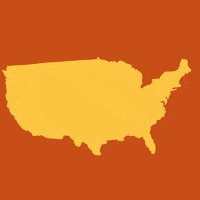Once upon a time students in grade school gathered around in classrooms to acknowledge Columbus day. They may have sang “Columbus sailed with three ships” and learned about the pilgrimage of people who colonized the Americas. Teachers may have shown videos, kids may done crafts relating to pilgrims and Native Americans, and maybe even ate candy corn.
These are the memories I have when I think of “Columbus Day.” A day that no longer exist; a holiday that praised inequity and inequality. Teachers all around the United States shared a common thought to try to make an in school day holiday fun for kids, but to what cost? I know that speaking of the gruesome tragedies brought on by these pilgrimage to Native Americans may have been inappropriate to some age groups for kids. But what about honest teaching things that didn’t revolve around praising an individual for a discovery that caused so much harm?
A quick google search of “when was columbus day first celebrated” gives you immediate answers with a bold one that states “October 12th 1792”. The 17th century? This ideology and appraisal has extremely deep roots in America. It was shocking to me, but what can you expect? The people making and passing laws were those colonizers who ingrained there new formed culture to whoever tried to be part of their “newfound nation”. But was it new? Of course not. To say that Columbus’ pilgrimage created or found a new nation is injustice for the native people who lived her.
Not too long columbus day got a new and rightful name to Indigenous Peoples Day. This new name brings somewhat justice to Native Americans. The name no longer praises someone and or the whole situation that cost trauma in many individuals life.
I was inspired to write about Indigenous Peoples Day this year because I attended an Indigenous Peoples Day event titled Roots of Injustice at the Essex campus last Monday. I didn’t really know what the event was going to be about but the title sounded intriguing so I attended it/helped out.
I watched and helped out with the set up of chairs put in a circle and in between that circle there was various blankets and quilts laid out side by side.
I thought it’d be an event where people sit around and listen to the speaker but that was totally not what happened. It was an interactive activity with students while the staff read out parts about the colonization of the Natives land. The student participants in the activity played the role of native American. Some moving around happened and it truly invoked the emotions that the Native Americans must have felt.
I do not want to go into full detail of what and how the activity is ran because I believe they host this event every fall. I want students, faculty, and staff to go into the event with open eyes like I did. It inspired me to look more into injustice that Native Americans faced. Not only that, but the Indigenous people can be easily forgotten. This event gave them a voice and a sense of reality that they are still here even after the massive trauma they lived and are currently living.
So for this Indigenous Day, I ask you; Do you ever think about Native Americans and how they are living on today?
We have the power to change how we view people, and we can start off by being grateful for those who are of the land. Changing people to fit your agenda is human genocide and they should take responsibility for the injustice roots they have implanted globally.







Really love this post. Everyone should explore history and different cultures.